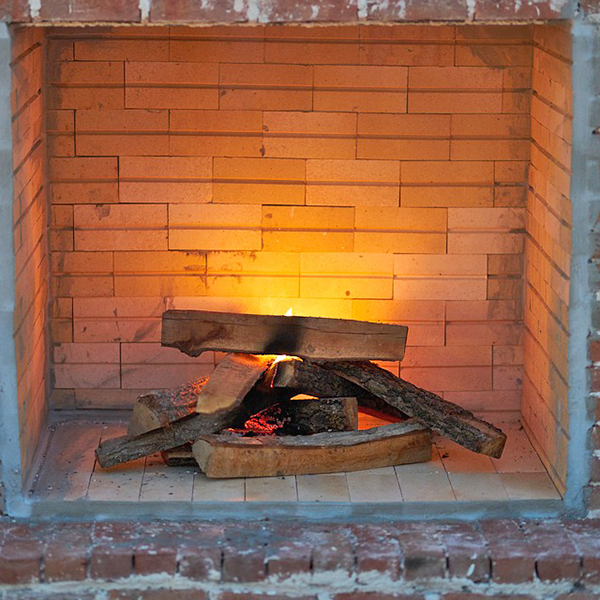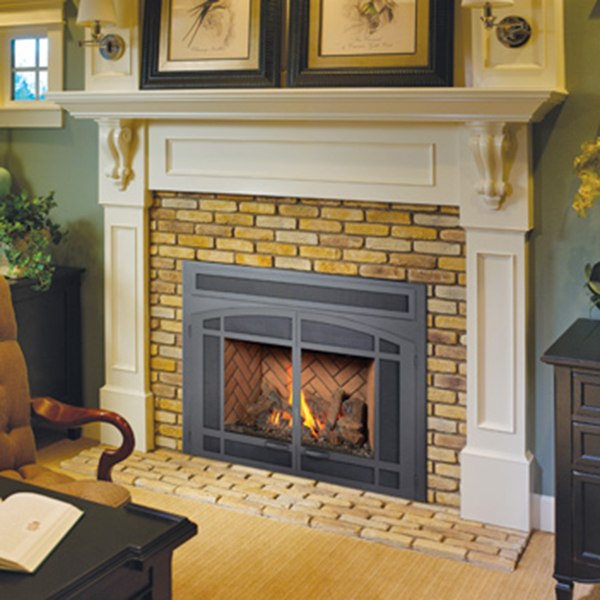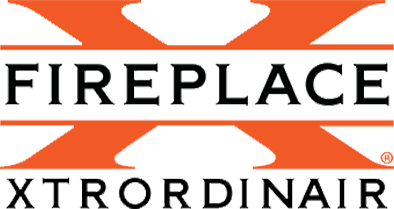What Type of Fireplace Do I Have and How to Tell
 When homeowners contact chimney sweeps with questions about their heating appliance, they are often asked, “What type of fireplace do you have?” Understandably, most people don’t know how to answer that question. It’s easier, however, to communicate with service professionals when you know your appliance type. Some helpful tips follow on how to tell what kind of fireplace you have.
When homeowners contact chimney sweeps with questions about their heating appliance, they are often asked, “What type of fireplace do you have?” Understandably, most people don’t know how to answer that question. It’s easier, however, to communicate with service professionals when you know your appliance type. Some helpful tips follow on how to tell what kind of fireplace you have.
Masonry Fireplace
A masonry fireplace is the type most common in older homes. It is built with bricks or stone on-site as part of the house and has a concrete crown at the top of the chimney. Another chimney component is a throat damper just above the firebox.
A masonry fireplace typically burns wood but can usually be retrofitted for gas fuel or pellets. If switched to gas, the fireplace likely has realistic-looking gas logs. When a pellet fireplace is added, pellets are usually the only type of fuel that can be burned. Traditional masonry fireplaces can also have glass doors added.
Prefab Fireplaces
Most new homes have factory-built or prefab fireplaces. They are made with solid sheet metal and sometimes have refractory panels inside them that resemble bricks. The chimneys of prefab fireplaces are most often encased with aluminum siding or faux brick. At the top, there is a chase cover. It sits atop the chimney like a metal shoebox lid. Factory-built fireplaces burn wood or gas.
 Fireplace Insert
Fireplace Insert
Fireplace inserts can be installed inside masonry and prefab fireplaces, and they convert a fireplace into a more efficient heating appliance. The installation of fireplace inserts should always be handled by trained professionals. Otherwise, using the appliance could be extremely dangerous. The biggest mistake made by non-professionals is using the chimney venting as-is. It is necessary almost 100% of the time to install a new chimney liner of the size recommended by the manufacturer of the insert.
Masonry fireplaces are ineffectual in that they have less than 10% efficiency. By adding a fireplace insert, which is comparable to an adapted woodstove, a masonry fireplace can be transformed into a viable supplemental heat source for the home with heating efficiency of 70% to 80% or more. Wood, gas, and pellets are the fuel sources you can choose from when installing a fireplace insert.
Direct Vent, B-Vent, and Vent-free Gas Fireplaces
A direct vent fireplace will usually have a sealed single-pane glass on the front. You can usually find the brand and model of your gas fireplace under the appliance’s lower louver if it is a direct vent model. Direct vent fireplaces bring outside air into the unit through the chimney and remove combustion byproducts the same way.
B-vent or natural vented gas fireplaces use air in the home to fuel the fire, and the combustion gases exit through the chimney with an updraft.
Vent-free gas fireplaces do not connect to a chimney and usually do not have glass in the front, either.
Contact the Experts at Dubuque Fire & Heating
Very rarely do homeowners have the paperwork that came with a fireplace to help them identify what type of fireplace they have. If the above-mentioned tips don’t help you identify what type of fireplace you have, the chimney sweep experts at Dubuque Fire & Heating are happy to help. Contact our professional sweeps for chimney inspections, chimney cleaning, chimney repair, chimney liner repair or replacement, fireplace insert installation, and any other chimney services you may need. The contact details follow.
Dubuque Fireplace & Patio
925 Century Drive, Dubuque, Iowa
Phone – (563) 582-5156
Chimney Specialists Inc.
869 Main Street, Highland, WI
Phone – (608) 929-4887 / Toll Free (800) 395-6660




















